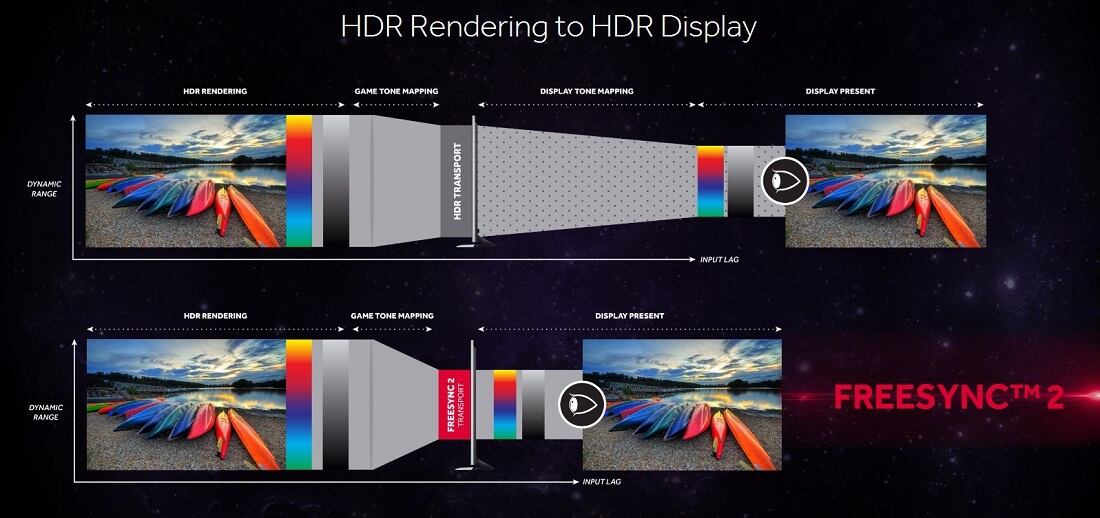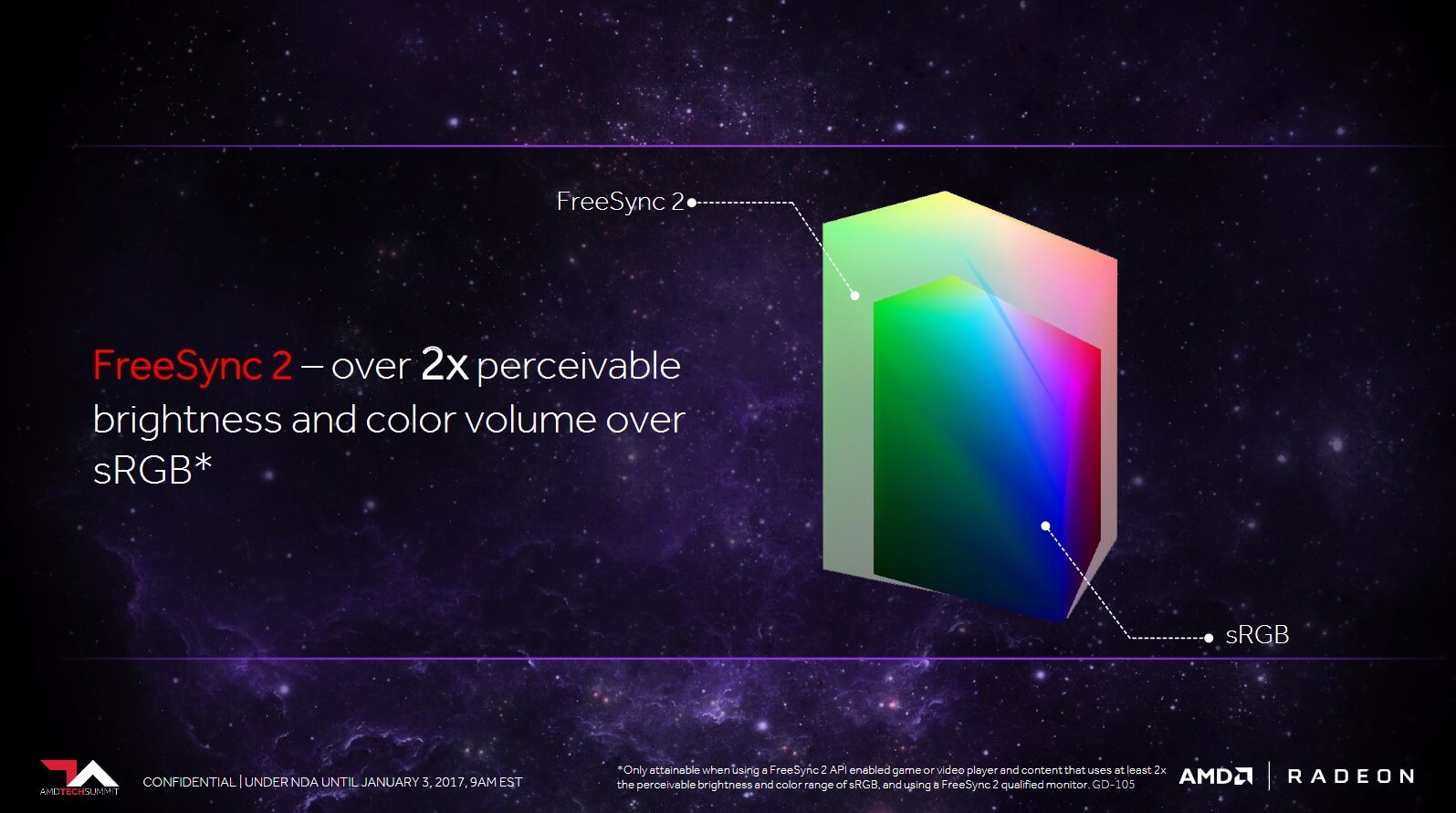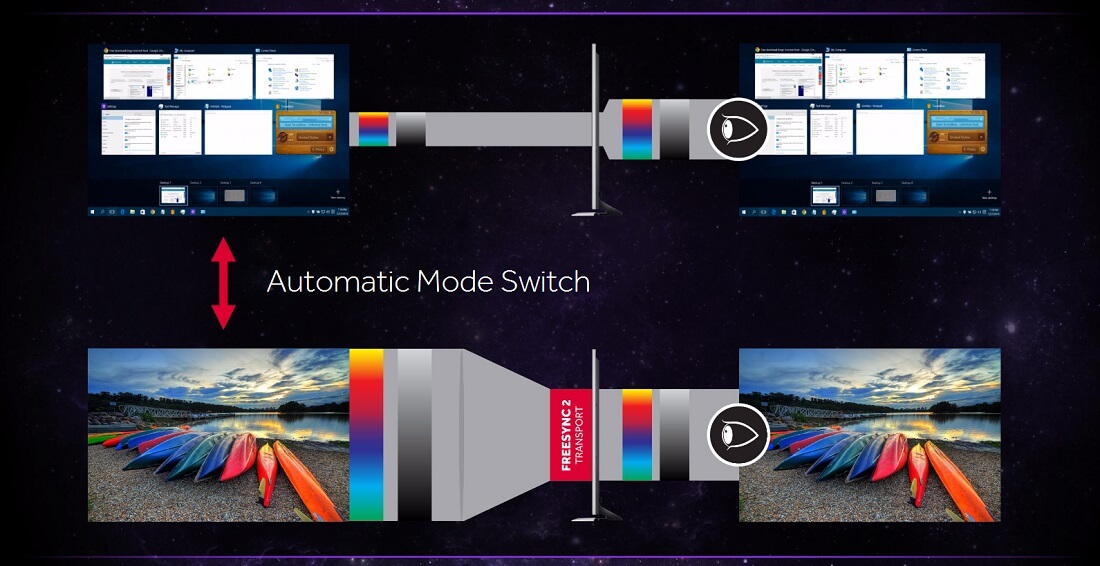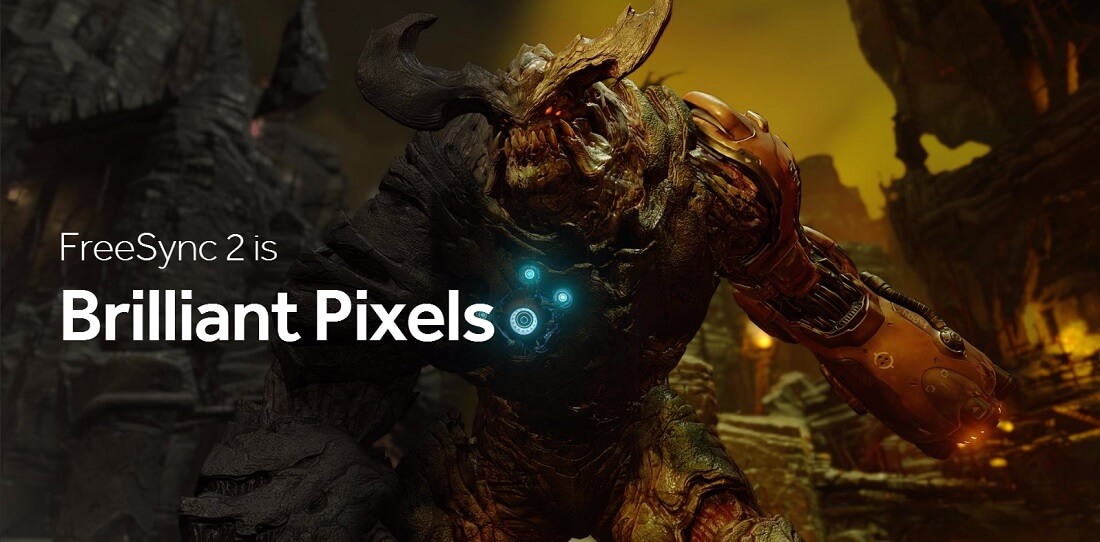The next big thing that's set to hit PC displays in the coming year is HDR, or High Dynamic Range. Already seen in a range of TVs, HDR technology increases the color depth and dynamic range of imagery, creating greater contrast between bright and dark areas that leads to more detail and a more realistic image. The difference between HDR and current technology (SDR) is stark and provides a noticeable improvement to the viewing experience.
One of the main issues with current HDR implementations, particularly for gaming, is the increased processing required to display HDR content. A game engine with support for HDR must first tone map its (essentially) infinite dynamic range and colors to what is supported by a HDR format like HDR10 or Dolby Vision. These formats are built for the future and support far greater dynamic range and color gamuts than modern displays, so additional tone mapping is required in the display to translate the incoming HDR signal into something the display can actually produce.
The additional display-side tone mapping that HDR requires increases the input lag from when a frame is rendered to when the frame is presented on the display. This extra input lag is already noticeable on some HDR-capable TVs when playing HDR games on an Xbox One S or PlayStation Pro, and will be an issue when HDR is integrated into PC games and monitors.

AMD is hoping to solve these issues with HDR rendering through their latest display technology initiative, FreeSync 2. The company is launching this tech before HDR monitors hit the market, in an attempt to get ahead of the curve as HDR increases in popularity and market prevalence.
The key aspect to FreeSync 2 is it eliminates display-side tone mapping when displaying a HDR image. It does this by giving game engines the exact characteristics of the attached display - data such as color gamut, supported dynamic range, brightness, etc. - so that the game itself can tone map directly to the display. Rather than receiving a HDR10 video signal that needs to be tone mapped for a second time using slow on-display processing, a FreeSync 2 display will receive a signal that requires essentially no processing, thus reducing input lag significantly.
There are some immediately apparent caveats with FreeSync 2. Firstly, the game itself must support FreeSync 2 so it can accept information from the display and correctly tone map within its engine. AMD has launched FreeSync 2 before HDR has become readily available on PC, so there's been plenty of time to get the ball rolling with game developers, but there are always questions over how many developers will actually bother to integrate FreeSync 2 support.
Secondly, FreeSync 2 relies on the display manufacturer creating an accurate profile of the display they create. Display vendors are notoriously bad at calibrating screens for current standards like sRGB, and frequently misreport, exaggerate or omit key display statistics on their product pages. FreeSync 2 display profiles will need to be accurate and tolerate slight manufacturing differences in real-world units.
There is good news on both fronts, however. AMD hinted that, in the future, there may be driver-side tone mapping for games that don't support FreeSync 2, so that HDR gaming is still possible in these titles without resorting to slow display-side tone mapping. It's not clear whether this feature will be available at launch.

AMD will also be certifying all FreeSync 2 displays so that gamers are guaranteed to receive a quality HDR experience when they buy a display branded with the FreeSync 2 logo. This should force display manufacturers into producing accurate profiles, but it has some other benefits too: AMD guarantees FreeSync 2 displays will have at least twice the maximum brightness and color spectrum of standard sRGB displays.
FreeSync 2 displays will also support all the features of the original FreeSync, chiefly variable refresh rates for stutter- and tear-free gaming. Low frame rate compensation will be a mandatory feature of FreeSync 2, as will low input lag in the "few milliseconds" range (AMD didn't go into specifics here).
Another issue with HDR displays attached to PCs is how they perform during everyday applications. To facilitate high contrast and spectacular dynamic range, most HDR displays have a rated maximum brightness well above 200 nits; often it's in the 1,000 nits range. This is clearly too bright for workstation usage, but it'd be very annoying to constantly have to modify your display settings as you move between HDR games and videos to everyday apps.
FreeSync 2 solves this issue by automatically switching between a HDR mode for games and HDR videos, which supports the full gamut and brightness capabilities of your display, to a pre-configured desktop mode for non-HDR content.

All AMD Radeon graphics cards and APUs that currently support FreeSync will support FreeSync 2, and both technologies will co-exist. FreeSync 2 is a premium brand that will be seen only in a handful of the best monitors on the market, while FreeSync will continue to be supported in a wide range of displays. It's best to think of FreeSync 2 as 'FreeSync Pro' (I'll never know why AMD confusingly called it FreeSync 2 instead).
AMD expects FreeSync 2 displays will become available this year, although it's up to monitor vendors to announce the first FreeSync 2 products.
